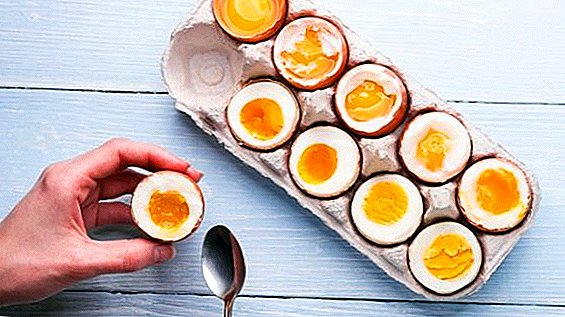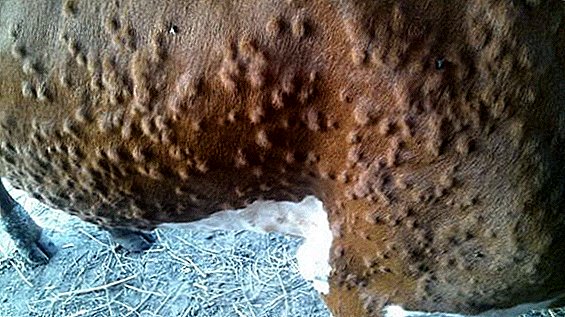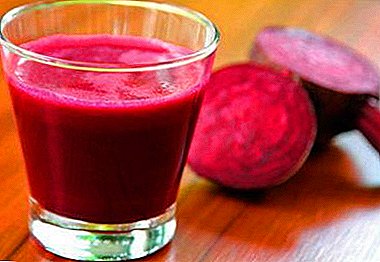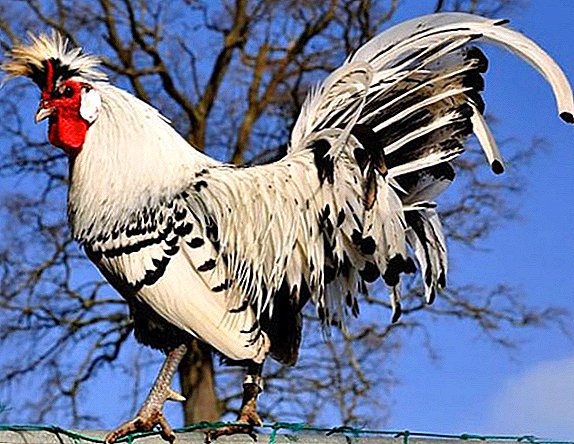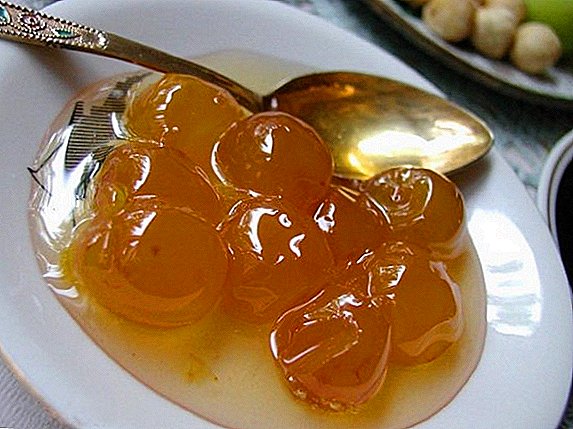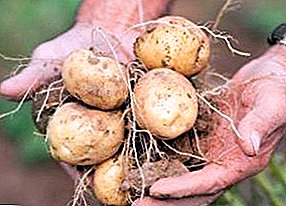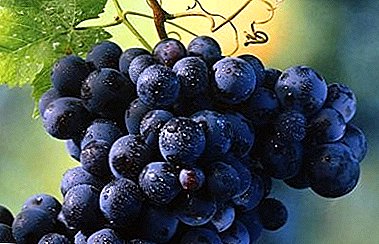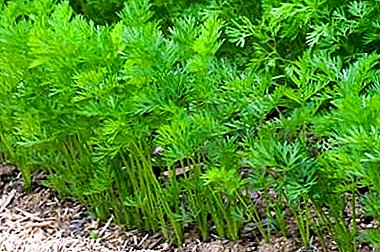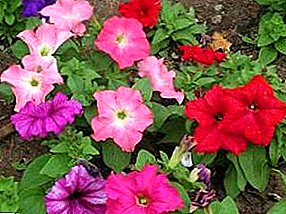 Petunias belong to the Solanaceae family, combining semi-shrubs and herbaceous perennials.
Petunias belong to the Solanaceae family, combining semi-shrubs and herbaceous perennials.
The natural habitat of the flower is in South America (Uruguay, Argentina, Bolivia, Paraguay), although one species of petunia is found on the northern continent.
Petunia stems can be both creeping and erect. The leaves of plants are whole, soft, arranged alternately, and the top - opposite. Both the leaves and the stems are pubescent with hairs.
The flowers are white, purple or red, have a smooth or terry surface. The structure can be axillary, single or finite. Seeds are grouped into a fruit that looks like a double box.
Enotera perennial - a great garden decoration.
Find out here the healing properties of periwinkle.
See the snapdragon, photo //rusfermer.net/sad/tsvetochnyj-sad/vyrashhivanie-tsvetov/yarkie-kraski-lvinogo-zeva-vidy-i-sorta-uhod-i-razmnozhenie.html.
Planting petunias
Sowing takes place in March or, in the presence of an autonomous light source, in February. Before planting, special attention should be paid to the moisture and nature of the selected soil, as the seeds take root only in a nutrient, pre-moistened environment. For uniform planting, the top layer of earth, centimeter thick, must be a sifted soil.
Sowing as follows
 Petunia seeds are mixed with a small amount of dry sand, poured on a previously prepared loose and moist soil, sprayed with water and covered with glass.
Petunia seeds are mixed with a small amount of dry sand, poured on a previously prepared loose and moist soil, sprayed with water and covered with glass.- At observance of temperature condition in 20-23o entrances appear in 7 days. They are very sensitive to the level of humidity: on the one hand, they require careful daily spraying, on the other hand, plants become victims of the “black leg” from excessive moisture and die. Shoots should be turned daily to the sun.
- When the seedlings have the first leaf, the glass is removed. There are frequent cases when the seedlings start to hurt - in this case, the seedlings are poured with sand, transferred to the minimum watering mode and spike. Landing them in the ground is made after the spring frosts finally remain in the past. Although flowers and endure transplant, in the manipulation of thin stems of seedlings need to be very careful.
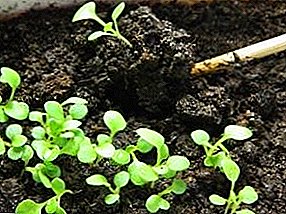 For disembarkation, dark time of day or days with cloudy weather will do. Flowers are planted in containers or pots at the rate of about 70 plants per 1 square. m. - that is, tight enough. The gaps between individual cuttings should be at least 20-25 cm for large-flowered species and 15-20 - for varieties with small flowers.
For disembarkation, dark time of day or days with cloudy weather will do. Flowers are planted in containers or pots at the rate of about 70 plants per 1 square. m. - that is, tight enough. The gaps between individual cuttings should be at least 20-25 cm for large-flowered species and 15-20 - for varieties with small flowers.- Immediately after planting the seedlings are watered. Nearby land is fertilized with humus or peat in order to preserve moisture and heat. The flowering of small-flowered varieties begins after 70-75 days after sowing, large-flowered - after 84-90 days.
Terry flowers, as noted above, propagate by cutting. Cuttings, cut from the queen cells, are planted in pots in winter, provided with proper lighting, regular ventilation and a constant temperature regime of 10-12 o. Rooted seedlings are moved to pots with a diameter of 9 cm.
Read all about the beneficial properties of calendula.
Learn how to grow lavender in your garden //rusfermer.net/sad/tsvetochnyj-sad/vyrashhivanie-tsvetov/vyrashhivaem-aromatnuyu-krasavitsu-lavandu.html.
Growing petunias
 Ideal soils for growing petunias are loamy and sandy loam, although absolutely any fertile composition may be suitable for this purpose. The plant is grateful for making compost or humus.
Ideal soils for growing petunias are loamy and sandy loam, although absolutely any fertile composition may be suitable for this purpose. The plant is grateful for making compost or humus.
But fresh manure is not the best fertilizer for petunias, since its presence can cause fungal diseases in the flower.
Petunia should be fed regularly in the summer and spring. Ideally, you need to make complex fertilizers with a high content of potassium three to four times a month. Organic compounds are suitable for this purpose, for example, mullein infusion.
You can start feeding in the second week of the field of planting plants. Such care will ensure its expressive and long flowering. In winter, feeding stops.
The rains are generally very harmful to petunias, as their leaves are injured and burst. However, flowers are not afraid of excess moisture. This property should be taken into account when watering: even though the root system of petunias implies drought resistance, it is necessary to water the plants abundantly and carefully, pouring water under the roots of the flower to avoid its stagnation.
All varieties of lilac varieties, learn on our website.
Chrysanthemums, growing and care //rusfermer.net/sad/tsvetochnyj-sad/vyrashhivanie-tsvetov/razmnozhenie-i-vyrashhivanie-hrizantem-poleznye-sovety.html.


 Enotera perennial - a great garden decoration.
Enotera perennial - a great garden decoration. Petunia seeds are mixed with a small amount of dry sand, poured on a previously prepared loose and moist soil, sprayed with water and covered with glass.
Petunia seeds are mixed with a small amount of dry sand, poured on a previously prepared loose and moist soil, sprayed with water and covered with glass. For disembarkation, dark time of day or days with cloudy weather will do. Flowers are planted in containers or pots at the rate of about 70 plants per 1 square. m. - that is, tight enough. The gaps between individual cuttings should be at least 20-25 cm for large-flowered species and 15-20 - for varieties with small flowers.
For disembarkation, dark time of day or days with cloudy weather will do. Flowers are planted in containers or pots at the rate of about 70 plants per 1 square. m. - that is, tight enough. The gaps between individual cuttings should be at least 20-25 cm for large-flowered species and 15-20 - for varieties with small flowers. Read all about the beneficial properties of calendula.
Read all about the beneficial properties of calendula. All varieties of lilac varieties, learn on our website.
All varieties of lilac varieties, learn on our website.